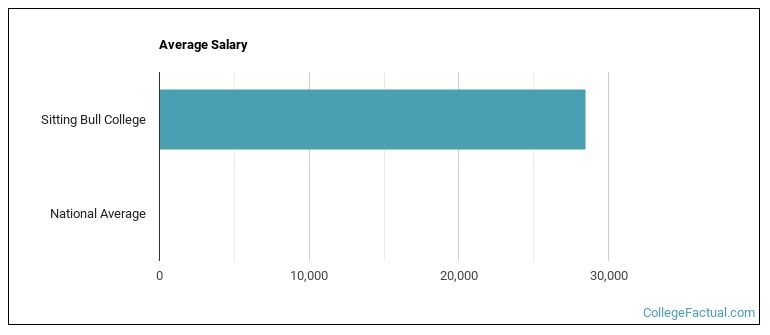 by our College Data Analytics Team
by our College Data Analytics TeamExplore the best ranked schools for the programs you are most interested in.
Sitting Bull College was not ranked in College Factual's Best Overall Colleges report this year. This may be because not enough data was available.
Since Sitting Bull College has an open admissions policy, being accepted to the school isn't that hard. However, a full basic things - such as a high school diploma or equivalent - may be required. Also, go over your application to make sure it is complete before you submit it.
The student to faculty ratio at Sitting Bull College is an impressive 7 to 1. That's quite good when you compare it to the national average of 15 to 1. This is a good sign that students at the school will have more opportunities for one-on-one interactions with their professors.
When estimating how much access students will have to their teachers, some people like to look at what percentage of faculty members are full time. This is because part-time teachers may not have as much time to spend on campus as their full-time counterparts.
The full-time faculty percentage at Sitting Bull College is 48%. This is comparable to the national average of 47%.
During the 2017-2018 academic year, there were 201 undergraduates at Sitting Bull College with 167 being full-time and 34 being part-time.
The net price is calculated by adding tuition, room, board and other costs and subtracting financial aid.Note that the net price is typically less than the published for a school. For more information on the sticker price of Sitting Bull College, see our tuition and fees and room and board pages.

See which majors at Sitting Bull College make the most money.
Get more details about the location of Sitting Bull College.

Contact details for Sitting Bull College are given below.
| Contact Details | |
|---|---|
| Address: | 9299 Hwy 24, Fort Yates, ND 58538-9721 |
| Phone: | 701-854-8000 |
| Website: | https://www.sittingbull.edu/ |
| Most Popular Majors | Bachelor’s Degrees | Average Salary of Graduates |
|---|---|---|
| Ground Transportation | 19 | NA |
| Business Administration & Management | 9 | NA |
| Industrial Production Technology | 7 | NA |
| Practical Nursing & Nursing Assistants | 6 | NA |
| Electrical & Power Transmission Installers | 5 | NA |
| Teacher Education Grade Specific | 5 | NA |
| Ethnic Studies | 4 | NA |
| Computer Information Systems | 3 | NA |
| Liberal Arts General Studies | 3 | NA |
| Human Services | 3 | NA |
Online courses area a great option for busy, working students as well as for those who have scheduling conflicts and want to study on their own time. As time goes by, expect to see more and more online learning options become available.
In 2022-2023, 176 students took at least one online class at Sitting Bull College. This is an increase from the 97 students who took online classes the previous year.
| Year | Took at Least One Online Class | Took All Classes Online |
|---|---|---|
| 2022-2023 | 176 | 42 |
| 2021-2022 | 97 | 11 |
| 2020-2021 | 77 | 0 |
| 2018-2019 | 54 | 0 |
If you’re considering Sitting Bull College, here are some more schools you may be interested in knowing more about.
Curious on how these schools stack up against Sitting Bull College? Pit them head to head with College Combat, our free interactive tool that lets you compare college on the features that matter most to you!
Footnotes
*The racial-ethnic minorities count is calculated by taking the total number of students and subtracting white students, international students, and students whose race/ethnicity was unknown. This number is then divided by the total number of students at the school to obtain the racial-ethnic minorities percentage.
References
More about our data sources and methodologies.